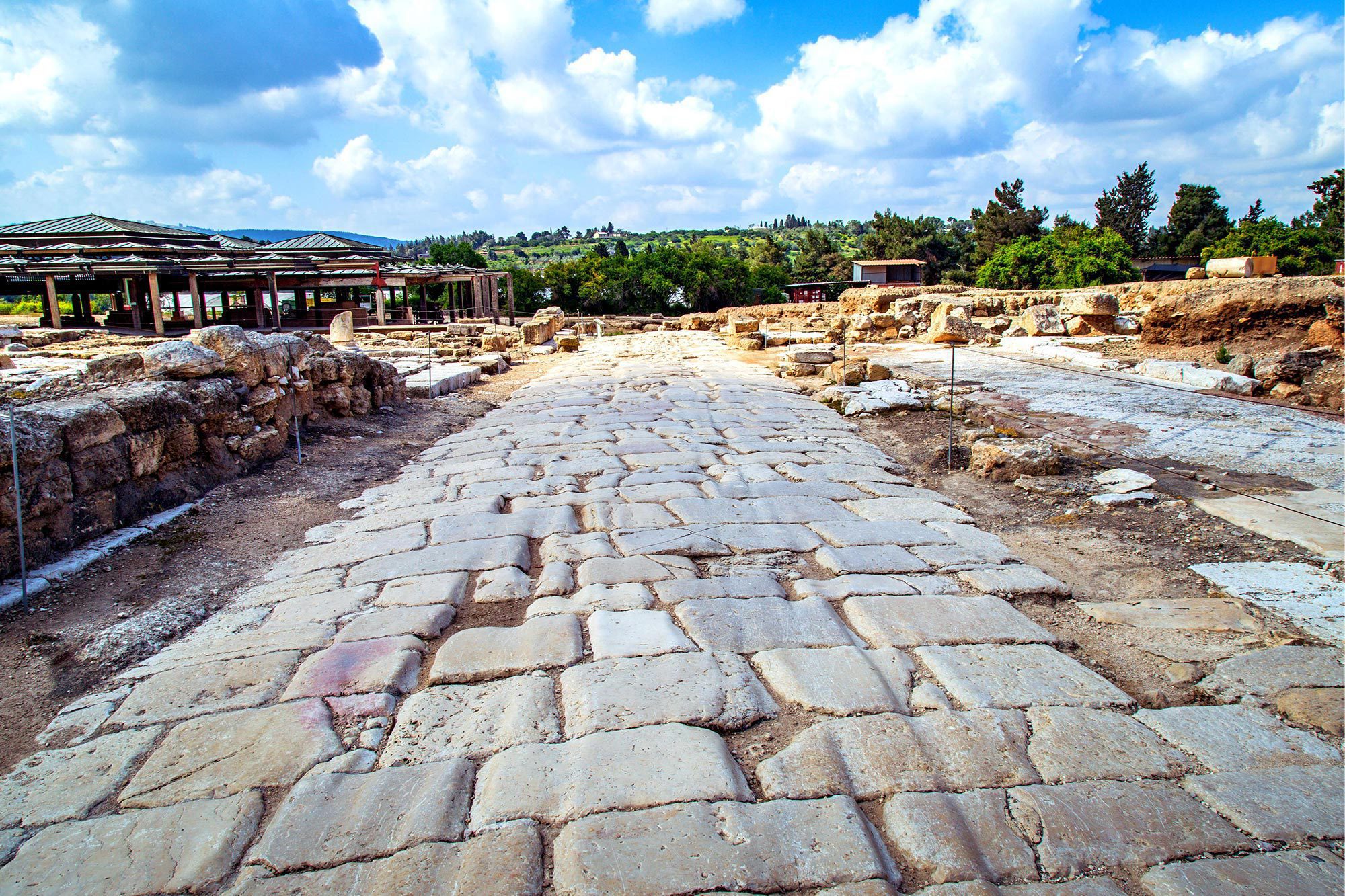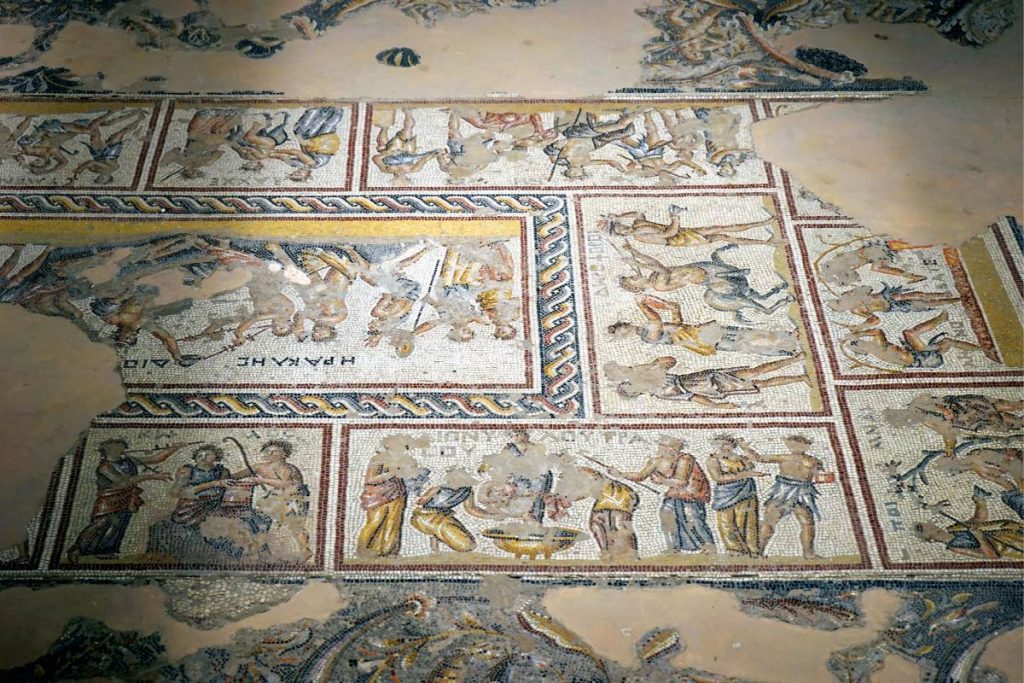Herod Antipas: His Early Life
Herod Antipas was a son of Herod the Great, who had become king of Judea, and Malthace, who was from Samaria. His date of birth is unknown but was before 20 BCE. Antipas, his full brother Archelaus and his half-brother Philip were educated in Rome.
Herod Antipas was not Herod’s first choice of heir. That honor fell to Aristobulus and Alexander; Herod’s sons by the Hasmonean princess Mariamne. It was only after they were executed (c. 7 BCE); and Herod’s oldest son Antipater was convicted of trying to poison his father (5 BCE); that the now elderly Herod fell back on his youngest son Antipas; revising his will to make him an heir. During his illness in 4 BCE, Herod had yet another change of heart about the succession. According to the final version of his will, Antipas’ elder brother Archelaus was now to become king of Judea, Idumea, and Samaria; while Antipas would rule Galilee and Perea with the lesser title of tetrarch.
Philip was to receive the Golan Heights; Batanaea (southern Syria), Trachonitis and Auranitis (Hauran). Because of Judea’s status as a Roman client kingdom; Herod’s plans for the succession had to be ratified by Augustus. Therefore, the three heirs traveled to Rome to make their claims, Antipas arguing he ought to inherit the whole kingdom and the others maintaining that Herod’s final will ought to be honored. Despite qualified support for Herod Antipas from Herodian family members in Rome, who favored the direct Roman rule of Judea but considered Herod Antipas preferable to his brother, Augustus largely confirmed the division of territory set out by Herod in his final will. Archelaus had, however, to be content with the title of ethnarch rather than a king.
Herod Antipas Reign (4 BCE to c. 39 CE)
After the death of Herod the Great in 4 BC; Augustus confirmed the testament of the dead king by making Herod Antipas tetrarch of Galilee and Perea, a region he would rule for the next forty-two years. The two territories were separated by the region of the Decapolis, with Galilee to the north and Perea to the south. Threats to stability in both areas would have been clear to Herod Antipas when he took office.
While Herod Antipas had been making his case to Augustus in Rome, dissidents led by Judas, son of Hezekiah, had attacked the palace of Sepphoris (see Sepphoris National Park) in Galilee, seizing money as well as weapons which they used to terrorize the area. In a counterattack ordered by Quinctilius Varus, the Roman governor of Syria; Sepphoris was destroyed by fire and its inhabitants sold as slaves. Perea, meanwhile, bordered on the kingdom of Nabatea; which had long had uneasy relations with Romans and Jews.
Herod Antipas Builds Tiberias
Part of Antipas’ solution was to follow in his father’s footsteps as a builder. He rebuilt and fortified Sepphoris. However, the tetrarch’s most noted construction was his capital on the western shore of the Sea of Galilee, Tiberias. So named to honor his patron Tiberius; who had succeeded Augustus as emperor in 14 CE. Residents could bathe nearby at the warm springs of Emmaus, and by the time of the First Jewish-Roman War the city’s buildings included a stadium; a royal palace and a sanctuary for prayer.
It gave its name to the sea and later became a center of rabbinic learning. However, pious Jews at first refused to live in it because it was built atop a graveyard and therefore a source of ritual impurity. Antipas had to colonize it with a mixture of foreigners, forced migrants, poor people, and freed slaves.
At other times Antipas was more sensitive to Jewish tradition. His coins carried no images, which would have violated Jewish prescriptions against idolatry. When Pontius Pilate, governor of Judea from 26 CE to 36 CE, caused offense by placing votive shields in the Antonia palace at Jerusalem; Antipas and his brothers successfully petitioned for their removal.
John the Baptist and Herod Antipas
Early in his reign, Antipas had married the daughter of King Aretas IV of Nabatea. However, on a visit to Rome he stayed with his half-brother Herod II and there he fell in love with his wife, Herodias, granddaughter of Herod the Great and Mariamne I; and the two agreed to marry after Herod Antipas had divorced his wife. Aretas’ daughter learned of the plan and asked permission to travel to the frontier fortress of Machaerus; whence Nabatean forces escorted her to her father. With his daughter now safe in his custody, Aretas now could declare war on Herod.
It is generally agreed that the war, in which Herod was defeated, occurred in 36 CE, a year before the death of the emperor Tiberius. But Antipas faced more immediate problems in his own tetrarchy after John the Baptist, in 28/29 CE according to the Gospel of Luke began a ministry of preaching and baptism by the Jordan River; which marked the western edge of Antipas’ territory of Perea.
The Gospels state that John attacked the tetrarch’s marriage as contrary to Jewish law (it was incestuous, as Herodias was also Antipas’ niece. But also John criticized the fact that she was his brother’s wife (Mark 6:18). While Josephus says that John’s public influence made Antipas fearful of rebellion. John was imprisoned in Machaerus and executed.
Salome Dancing For Herod Antipas Asking John the Baptist Head
According to Matthew and Mark, Herod Antipas was reluctant to order John’s death but was compelled by Herodias’ daughter (unnamed in the text but named by Josephus as Salome); to whom he had promised any reward she chose as a result of her dancing for guests at his birthday banquet. Although we know today it is some kind of a folklore narrative and there is no truth to it.
Among those baptized by John was Jesus of Nazareth, who began his own ministry in Galilee, causing Antipas, according to Matthew and Mark, to fear that John had been raised from the dead. Luke alone among the Gospels states that a group of Pharisees warned Jesus that Antipas was plotting his death; whereupon Jesus denounced the tetrarch as a “fox” and declared that he, Jesus, would not fall victim to such a plot because “it cannot be that a prophet should perish away from Jerusalem”.
Herod Antipas Meets Jesus in Jerusalem
Luke also credits the tetrarch with a role in Jesus’ trial. According to Luke, Pilate, on learning that Jesus was a Galilean and therefore under Herod’s jurisdiction, sent him to Antipas, who was also in Jerusalem at the time. Initially, Antipas was pleased to see Jesus, hoping to see him perform a miracle; but when Jesus remained silent in the face of questioning; Antipas mocked him and sent him back to Pilate. Luke says that these events improved relations between Pilate and Herod despite their earlier enmity.
Later Reign
Between 34 and 36 CE the conflict with Aretas of Nabatea; caused by Antipas’ divorce from Aretas’ daughter and the rulers’ disagreement over territory, developed into open war. Antipas’ army suffered a devastating defeat after fugitives from the former tetrarchy of Philip sided with the Nabateans. So Antipas was forced to appeal to Tiberius for help. The emperor ordered Lucius Vitellius, governor of Syria, to march against Aretas and ensure that he was captured or killed. So Vitellius obediently mobilized two legions; sending them on a detour around Judea while he joined Antipas in attending a festival at Jerusalem. While staying there he learned of the death of Tiberius (16 March 37 CE); concluded he lacked the authority to go to war, and recalled his troops.
Josephus implies that Vitellius was unwilling to cooperate with the tetrarch because of a grudge he bore from an earlier incident. According to his account, Antipas provided hospitality at a conference on the Euphrates between Vitellius and King Artabanus III of Parthia, and after Vitellius’ diplomatic success anticipated the governor in sending a report to Tiberius. However, other sources place the meeting between Vitellius and Artabanus under Tiberius’ successor Caligula, leading some historians to think that Josephus misdated it to the reign of Tiberius or conflated it with an earlier diplomatic meeting involving Antipas and Vitellius.
Exile and Death
Antipas’ fall from power was due to Caligula and to his own nephew Agrippa, brother of Herodias. When Agrippa fell into debt during the reign of Tiberius despite his connections with the imperial family; Herodias persuaded Antipas to provide for him. But the two men quarreled and Agrippa departed. After Agrippa was heard expressing to his friend Caligula his eagerness for Tiberius to die and leave room for Caligula to succeed him, he was imprisoned. When Caligula finally became emperor in 37 CE; he not only released his friend but granted him the rule of Philip’s former tetrarchy, with the title of king.
Josephus relates that Herodias, jealous at Agrippa’s success, persuaded Herod Antipas to ask Caligula for the title of king for himself. However, Agrippa simultaneously presented the emperor with a list of charges against the tetrarch: allegedly, he had conspired against Tiberius; and was now plotting against Caligula. As evidence, Agrippa noted that Antipas had a stockpile of weapons sufficient for 70,000 men.
Hearing Herod Antipas’ admission to this last charge; Caligula decided to believe the allegations of conspiracy. In the summer of 39 CE, Antipas’ money and territory were turned over to Agrippa, while Antipas was exiled. Caligula offered to allow Herodias, as Agrippa’s sister; to retain her property. However, she chose instead to join her husband in exile. Where de also dies.









